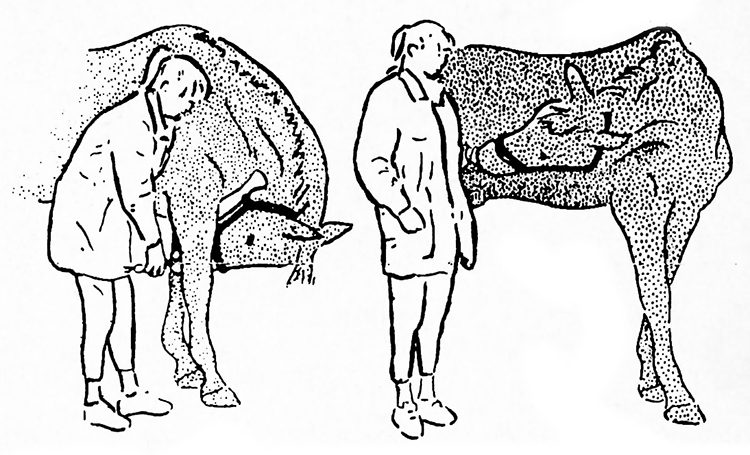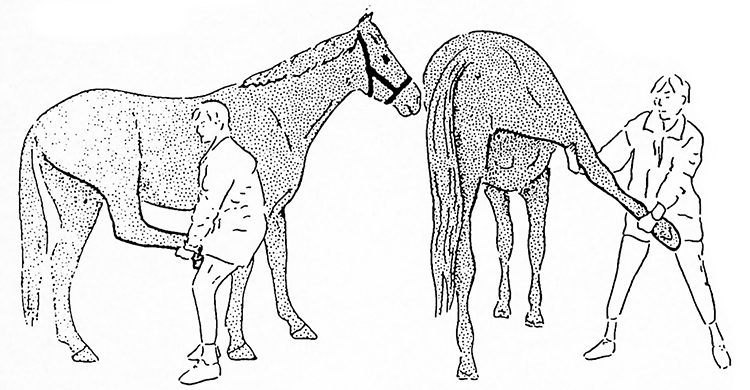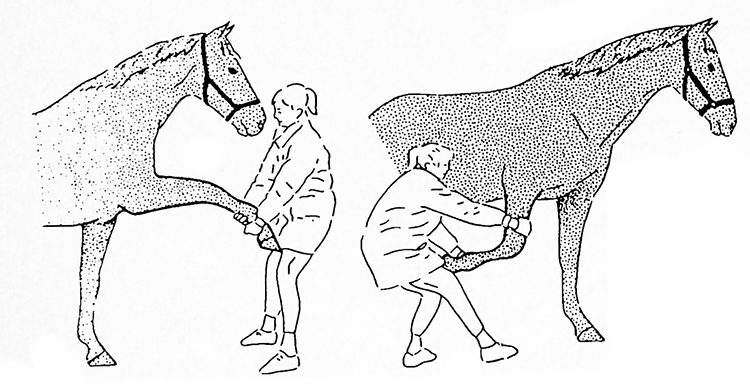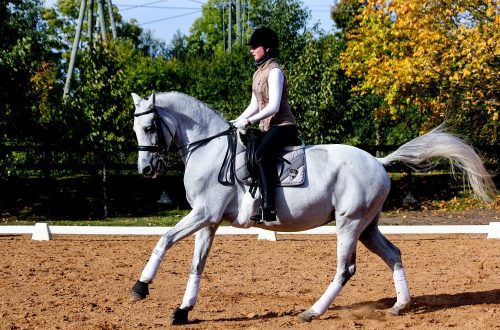
Ground Exercises: Flexibility Exercises
Activities on the ground:flexibility exercises
First, let’s define the terms:
Passive flexion – slow controlled movement to the limit of the range of motion of the joint by means of an external force.
Dynamic flexion – rapid movement of the joint, due to active muscle contraction or weight.
Most of the exercises are performed with the shoulders, hips and spine of the horse. When performing a series of flexibility exercises, it is recommended that you first work out the main joints of the neck and back, moving to the upper and then to the lower parts of the limbs. Flexibility exercises are described as either passive or dynamic. Both types of exercise are beneficial and effective for horses.
Passive flexion
Passive flexion involves the slow, controlled movement of a joint to the limit of its range of motion through the application of an external force. Because the force is applied slowly, it avoids stimulating the myotic stretch reflex, resulting in muscle tension that will resist the stretch. When the limit of movement in a certain direction is reached, the stretched position is held for 20 seconds to increase the range of lengthening of the ligaments, tendons, and joint capsules.
Passive curls are used in addition to dynamic curls to provide a long-term increase in range of motion in the neck, shoulders, and hips and promote relaxation and reduce muscle soreness after exercise. As with any type of exercise, the tissues must be warmed up before they are performed.
Ventral flexion of the neck is done with a treat held between the horse’s front legs. As elasticity increases, the horse will be able to drop his nose further back between his legs. In a side bend, we hold the treat on the side of the horse’s body, behind the girth. As the horse becomes more elastic, he will pull further towards his hip. Strictly speaking, these are not passive exercises, because the movement is controlled by the muscular activity of the horse. However, they are easily integrated into the passive serving routine.

Ventral and lateral flexion of the neck.
The shoulder area and hip joints are stretched in all directions during a series of passive exercises.
Before starting lThe horse should be in a quiet place and stand, leaning evenly on all four limbs. For safety reasons, it is desirable that the horse is not tied (it is better if an assistant holds it). The person doing the work with the horse must have enough room to move around the horse.
Shoulder stretching involves moving the front leg to the limit of its range of motion forward, backward, sideways, and medially and holding each stretched position for a few seconds. The front leg slowly moves forward to stretch the elbow and shoulder. The wrist joint is kept slightly flexed to relieve tension in the flexor tendons and ligaments. The stretched position is held for 20 seconds. The whole leg moves to the side. It should be taken with one hand slightly above the wrist joint and held in this position for 20 seconds. The leg is then pulled back, with one hand held above the flexed carpal joint to extend the elbow. Hold in this position for another 20 seconds. Finally, the leg is moved medially, in front of the opposite front leg, to the limit of joint movement and held for another 20 seconds. The sequence is repeated with the second front leg.
A similar set of passive forward, backward, lateral, and medial stretching exercises are used for the hip joint. During an anterior stretch, the stifle and hock are flexed to about 90° from the vertical axis, with the metacarpal in a horizontal position.
We pull the hock, tibia and knee joint up, bending the hip joint. In a side stretch, the hocks and knees are partly flexed and you are pulling on the spot above the hock with one hand in a sideways direction. When we stretch the leg back, the hock is flexed to 90°, the tibia is horizontal, and the metatarsus is vertical. Gently pull the femur back, holding on to the front of the knee joint, and open the hip joint. In the medial stretch, the stifle and hock are moderately retracted so that the hock passes across and slightly above the hock of the opposite leg. Each stretched position is held for 20 seconds, the exercises are performed on both hind legs.

Stretching forward and to the side of the horse’s hind leg and hip joint.
The horse should be comfortable during the stretching exercises. It may take a few days at first for the horse to relax while stretching the shoulders and hips, but most horses quickly learn to enjoy the procedure.
If the horse is recovering from an injury and unable to work, passive stretching is especially helpful in maintaining or restoring a normal range of motion. Under these conditions, before flexibility exercises tissues are heated using a heat lamp or manual massage. The joints are flexed and extended as far as is comfortable for the horse and held in the extended position for a few seconds. Passive movement, in which the joints move slowly but continuously within their range, can also be beneficial for horses that are at rest.
Dynamic flexion
Dynamic flexion involves the rapid rotation of a joint within its range of motion through muscle contraction or the application of weight, as occurs during activity.
An example of dynamic exercises would be movements that are part of a regular training program, including twists, circles, circles, and lateral movements (leg yield, shoulder in, shoulder out, hip in, hip out, half pass). The beneficial effect of this type of exercise is due to the sliding movement of the shoulder blades along the chest, flexion of the spinal column, swinging the hind legs in a wide arc.
Other exercises that have a dynamic effect include walking and trotting over elevated poles, gymnastic jumps, tight curve work, and riding in shallow water or snow. All of these exercises involve active flexion and extension of the limbs through a wide range of motion. Swimming is sometimes used to maintain the range of motion of the joints while avoiding strenuous exercise. This is a very useful variant of dynamic flexion for certain limb injuries.
Dynamic bends are especially effective for increasing dynamic flexibility in sports that require fast movements and for the physical development of the horse in a specific equestrian discipline. However, a fast stretching rate promotes elastic deformation. Indeed, the horse makes excellent use of elastic back action to reduce energy expenditure during activity. The long-term adaptive response to dynamic stretch occurs slowly, over a long period.

Back and forth movements of the front leg to stretch the shoulder.
Overstretching
Overstretching tears the fibers of the muscles, tendons or ligaments and is very painful. The risk of overstretching (injury) depends on the temperature of the tissues, the intensity and speed of stretching, and the number of repetitions. Unheated tissues are susceptible to injury. Signs of tension may include local fever, swelling, and pain on movement or palpation. In the early stages, cold compresses (cold water, ice packs) are helpful, and rest and (if necessary) anti-inflammatory drugs will also be required. The severity of the injury determines the length of rest and the need for further treatment. During rehabilitation, passive exercise is helpful in preventing soft tissue constriction that limits range of motion. Exercises are reintroduced gradually after the end of the acute disease state.
Hilary Clayton, BSc, Fellow of the Royal College of Veterinary Surgeons and the American Association of Equine Practitioners (source); translation by Valeria Smirnova.




